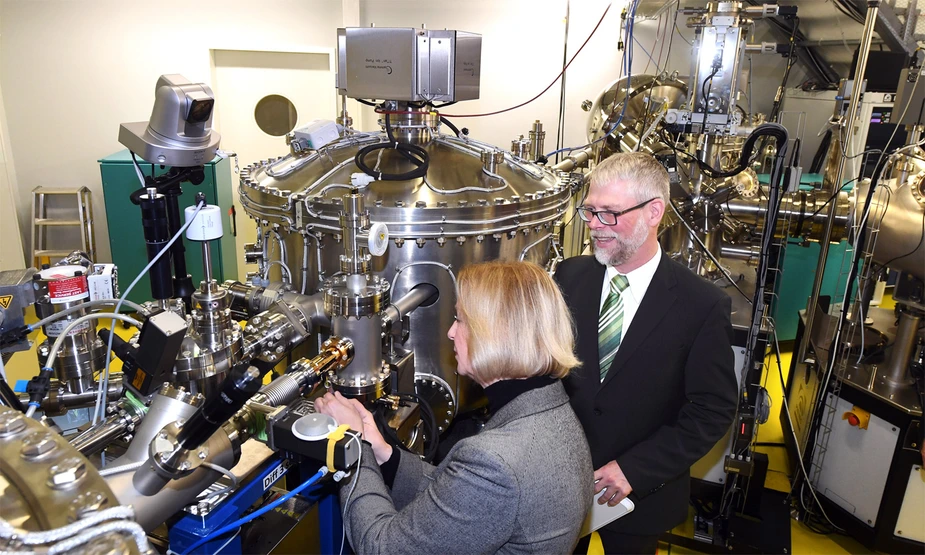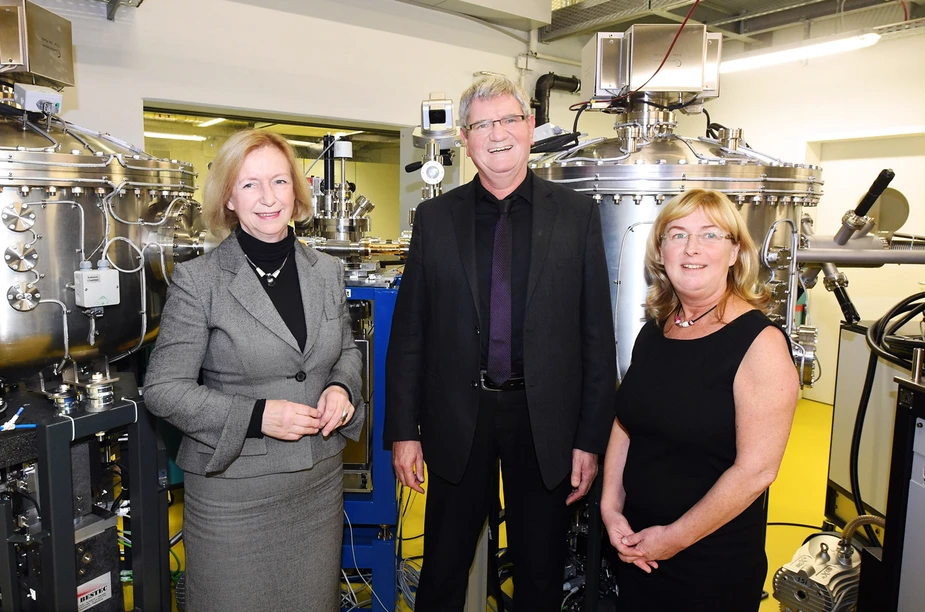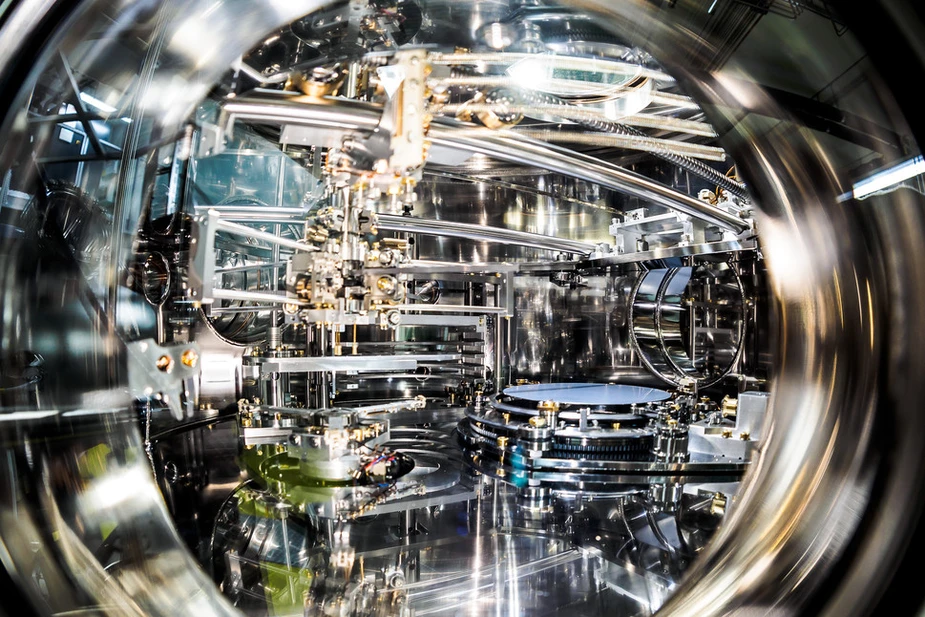Research into new energy materials
EMIL, a 2000-square-metre laboratory complex, has opened in Adlershof
After three years of construction, the Energy Materials In-Situ Laboratory (EMIL) is now open. The new laboratory complex for researching energy materials, annexed to BESSY II in Berlin-Adlershof, was ceremonially inaugurated with the involvement of the Federal Minister of Research, Johanna Wanka, on 31 October 2016. At the new laboratory, which offers direct access to the brilliant light of the electron storage ring BESSY II, researchers are looking to synthesise and analyse materials for future renewable energy generation. Around 20 million euros were invested in the construction of the laboratory.
“This combination of excellent energy research with the operation of unique infrastructures creates a research environment with special synergistic effects, and lays the foundation for new and successful products,” the Federal Minister of Research said at the inauguration.
Helmholtz-Zentrum Berlin (HZB) and the Max Planck Society (MPG) constructed the EMIL laboratory as a joint project. At the research laboratory CAT, the Fritz Haber Institute of MPG and the Max Planck Institute for Chemical Energy Conversion will be researching into catalytic processes. In the laboratory section SISSY, HZB will be studying new thin-film materials for solar cells, solar fuels and thermoelectricity, as well as materials for energy-efficient information technologies/spintronics. The knowledge gained from materials research is a crucial element as we work towards a sustainable energy supply.
What is special about the laboratory complex: Material systems can be analysed in real time (in-situ) and at full functionality (in-operando) using the synchrotron radiation from BESSY II over a wide spectrum of photon energies, ranging from soft to hard X-rays. Researchers can thus study processes and phenomena either at the sample surface (using soft X-rays) or within deeper layers inside the material (using hard X-rays).
Combined with a multitude of the latest generation analytical methods, researchers gain indispensable knowledge about the properties and processes occurring in new energy materials. These results will help in the targeted design of such materials, and aide in their further development up to application maturity. Partners from industry can also use the laboratory to access characterisation methods that are in some cases unique in the world, and will receive comprehensive support from the HZB experts on site.
Materials researchers benefit in particular from the synthetic capabilities offered at the laboratory. There are 20 different deposition methods available for producing energy materials. Immediately after synthesis, the materials are fully automatically transferred directly to the analytical station and back again – all in an ultra-high vacuum. Material systems can thus be produced and characterised layer by layer.
“With EMIL, we can now expand our expertise in combinatorial material synthesis and combine the synthesis and analysis of energy materials even better,” emphasises Prof. Dr. Anke Kaysser-Pyzalla, scientific director of HZB. She stresses the importance of EMIL as part of the HZB Strategy 2020+: “The newly built EMIL complex reflects what HZB stands for: we combine our research into energy materials with the methods that the synchrotron source BESSY II offers us.”
Prof. Robert Schlögl, director at the Fritz Haber Institute of the Max Planck Society and the Max Planck Institute for Chemical Energy Conversion, asserts “EMIL is an important milestone on the path towards understanding electrode materials in water electrolysis.”
Around 20 million euros were invested in the construction of EMIL. The German Federal Ministry for Education and Research (BMBF) provided 6.1 million euros from the Innovation Alliance “Photovoltaics.” HZB and MPG invested 6.5 and 7.6 million euros, respectively. Further funding came from MPG and from the strategic expansion investments of the Helmholtz Association for integrating EMIL into the Helmholtz Energy Materials Characterization Platform (HEMCP).
Further Information:
- Photo Gallery
- Movie about EMIL
- Blog: What will scientists do in the new laboratory? The answers are on HZBzlog.
Press contact:
Dr. Ina Helms
Helmholtz-Zentrum Berlin für Materialien und Energie
Tel.: (030) 8062-42034 / -14626
Fax: (030) 8062-42998
Email: ina.helms(at)helmholtz-berlin.de


